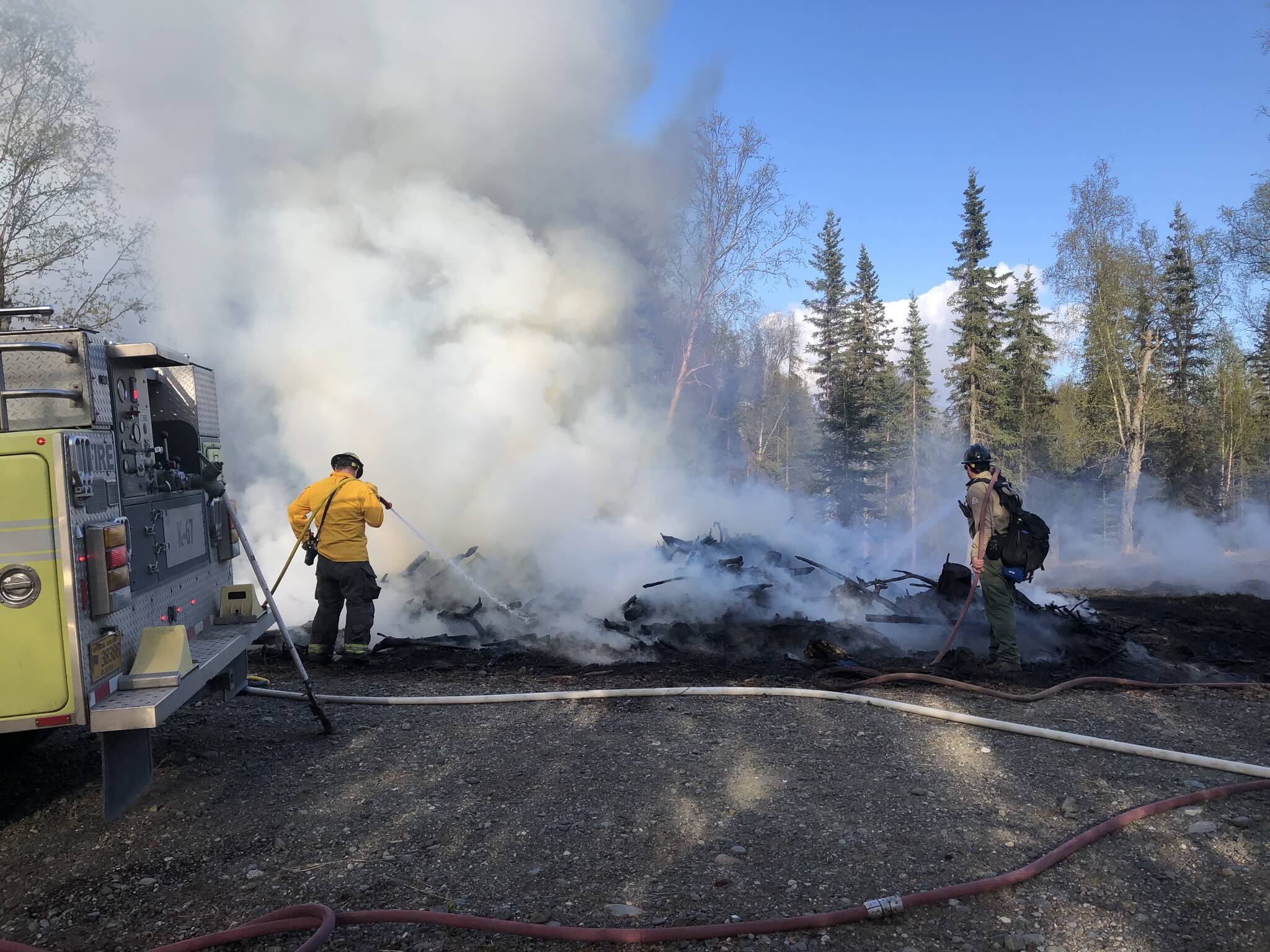It’s fire season on the Kenai Peninsula and around the state. Since the start of May, as of Monday, the State Division of Forestry & Fire Protection has reported 47 human-caused fires, nine of which were located on the Kenai Peninsula.
The largest local fire was the Charland Fire, which was reported on Sunday, according to a weekly fire report published by the division. That fire was caused by two burning slash piles that had escaped into the nearby wildland. Seven total engines responded to suppress the flame, and it was “called contained and controlled” that day.
The division has also responded to local fires off of Gaswell Road and Funny River Road, in Anchor Point and in Nikiski, among others.
The division announced in April that wildland fire season was underway, and that burn permits are required on all state, municipal and private lands that don’t have a local burn permit program in place.
Small-scale burn permits, which include burns of one brush pile, one burn barrel, or of maintained lawn, are available online at dnr.alaska.gov/burn.
Larger burns require site inspection, additional people, water or heavy equipment, and must be acquired by contacting the division at forestry.alaska.gov.
Campfires less than 3 feet in diameter do not require a burn permit.
“In April and May, most of the fires we respond to are started by some type of human activity,” Division Chief of Fire & Aviation Norm McDonald said in the release. “That means most early-season fires are preventable. If people follow the safe burning guidelines on their burn permits, we as Alaskans can help each other out and prevent unintentional wildfires.”
Last week, McDonald and other Wildland Fire Managers Kent Slaughter and Tyler Anderson released a letter for Alaska Wildland Fire Prevention and Preparedness Week where they said that last summer nearly 600 wildfires burned more than 3 million acres of land in Alaska.
Wildland fire season, they wrote, is starting earlier because of the changing climate, and is also becoming both longer and more intense. The number of acres burned from 2003-2022 is more than double the number of acres burned in the 20 years prior, and nearly three times the number of acres burned in the twenty 20 before that.
Human caused fires are life threatening, costly, and contribute to air pollution, they wrote.
Guidelines for safe burning are available at dnr.alaska.gov/burn/specifications, but they generally include running only one fire at a time, maintaining a clear space around the fire cleared all the way down to the soil, and staying with the fire until it is completely out and cold to the touch. A sufficient amount of water and other tools for controlling the fire should also be readily available.
For more information about burn permits and safe burning practices, visit dnr.alaska.gov/burn. To report a wildfire, call 911.
Reach reporter Jake Dye at jacob.dye@peninsulaclarion.com.

